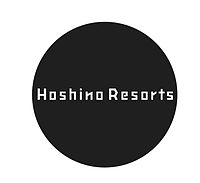Hoshino Resorts
 |
|
| Luxury ryokan | |
| Industry | Hospitality, tourism |
| Founded | 1904 |
| Founder | Kuniji Hoshino |
| Headquarters | Hoshino, Karuizawa, Nagano, Japan |
|
Number of locations
|
30 resorts |
|
Area served
|
Asia |
|
Key people
|
Yoshiharu Hoshino |
| Revenue |
|
|
Number of employees
|
1,600 (2012) |
| Website | global.hoshinoresort.com |
Hoshino Resort Co., Ltd. (株式会社 星野リゾート Kabushiki Kaisha Hoshino Risōto?) is a Japan-based international operator of ryokan (Japanese inns) with its head office in Karuizawa, Nagano. Founded in 1904 by Kuniji Hoshino as a forestry business in Karuizawa, in the Japanese Alps, it opened its first hot spring resort in 1914.
Rebranded by Yoshiharu Hoshino in 1995 as Hoshino Resorts, it has expanded across Japan and Asia with an eco-friendly policy, use of organic local produce at its restaurants, self-sufficient energy usage, and a theme of traditional Japanese-style resort accommodation. Part of the company's original theme is what Japan would be like if it continued to modernize without the influence of the West.
Hoshino Resorts has also developed its bridal business through Hotel Bleston Court, a real estate leasing business, and its food business. Noriyuki Hamada, Executive Chef of Bleston Court Yukawatan restaurant in Karuizawa became the first ever Japanese chef to be recognised at the Bocuse d'Or in January 2013, winning third prize, while Hoshinoya Kyoto chef Ichiro Kubota earned a Michelin Star in October 2012.
Hoshino Resorts began life in 1904, as a forestry business in Karuizawa, which had just begun to become popular as a location for holiday villas. Founder Kuniji Hoshino then opened the first Hoshino Onsen Ryokan ten years later in 1914. As natural hot springs were uncovered in the area, Karuizawa became a center for 1920s culture, attracting some of the most notable authors, poets and feminists of the period such as Tōson Shimazaki, Kanzō Uchimura, Akiko Yosano, and Hakushū Kitahara to the "Liberal Education of Art Workshop" held in the area. It began its policy towards energy self-sufficiency as early as 1929, with the opening of its first hydroelectric power plant.
...
Wikipedia
